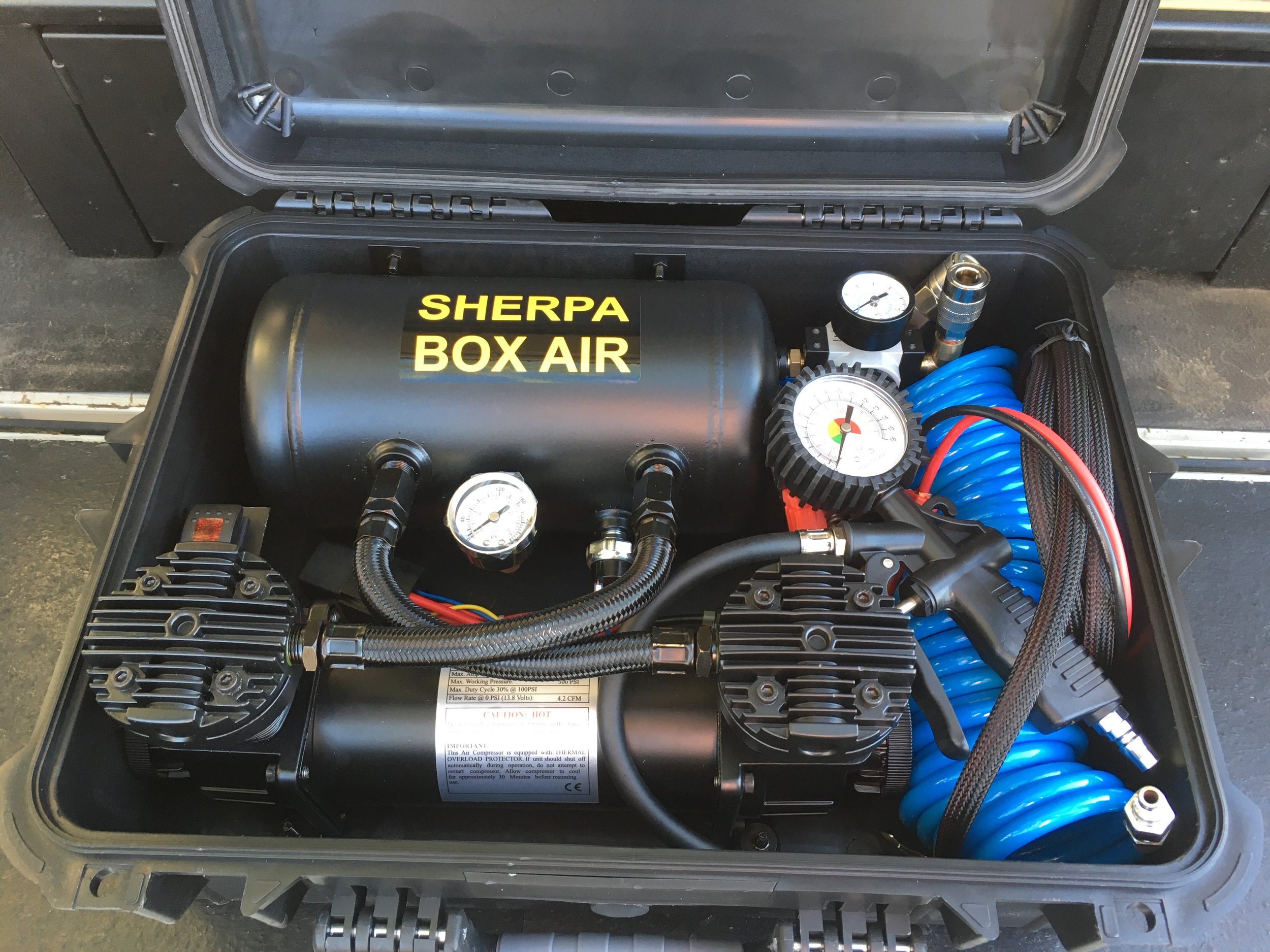The Sherpa Box Air compressor system . . . initial review.
I consider myself the ARB Twin compressor’s number one fan. No other compressor I’ve used displays as much quality, versatility, and speed, either as a built-in unit—the configuration we have on our Land Cruiser Troop Carrier—or as the cased portable we also own, with its included air tank.
However. No one, including me, ever called the Twin a screaming bargain, at $600 for the stand-alone compressor or an eye-watering $990 for the portable unit. If you can afford it, it’s worth every penny. But what if that’s simply too much for your budget?
Recently I found what might be a legitimate alternative in the Sherpa Box Air system. At a glance it seems to be a close copy of the ARB Twin Portable, incorporating a twin-cylinder compressor with an air tank inside a Pelican-style case. The price of the Sherpa Box Air, however, is $629 including free shipping from Australia. (Astonishingly, the unit I ordered arrived on my doorstep just four days later, thanks to DHL.) The Sherpa also includes a trigger-style air chuck with a built-in pressure gauge, which the ARB does not.
That sounds like an open-and-shut case, so to speak. However, there are a couple of significant differences between the two units. The ARB Twin is fan-cooled, which in addition to its high-quality internals lends it a superb 100-percent duty cycle. The Sherpa, by contrast, is not fan-cooled and has a 33-percent duty cycle. Otherwise, factory specs regarding air flow and amperage draw are remarkably similar.
On balance I strongly prefer a 100-percent duty cycle; however, a 33-percent duty cycle is not necessarily a deal breaker as long as the unit can air up a full set of tires—or yours plus a friend’s, say—before needing a rest.
I plan to do a side-by-side comparison soon. In the meantime, Sherpa is here.
Edit: I just discovered that Sherpa has updated the Box Air with a slimmer twin compressor that is fan cooled and more closely resembles the ARB design. See below. The duty cycle remains at 33 percent, however.



